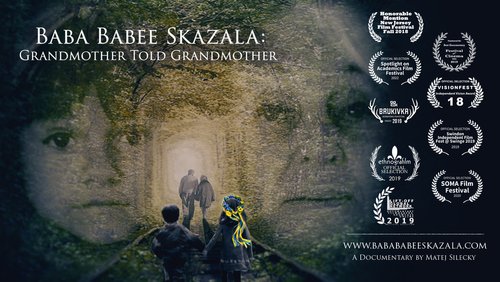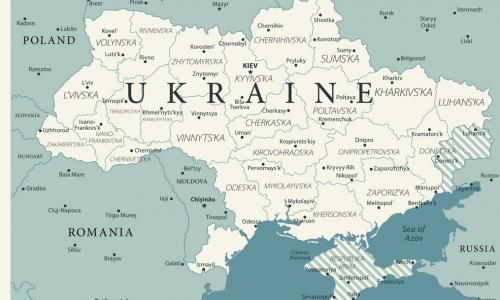The following resources provides schools with tips for supporting students, families, and staff members who are impacted by the war in Ukraine.
This resource collection also includes recommendations for discussing the crisis with children and teens.
Supporting Students Impacted by the Conflict
Related resource
See more ideas in:
Students with ties to Ukraine
Students and families with ties to Ukraine may be anxious, distressed, grieving, traumatized, and exhausted by the news they are seeing and hearing from loved ones. They may also have a hard time focusing. At the same time, students may have strong community and family ties that are providing important support right now, as seen in the following stories:
- A Ukrainian School in New York Takes on a Big Mission (The New York Times)
- Ukrainian students at CPS school try to process Russian invasion: 'Very sad and distressed' (Chicago Tribune)
- Ukrainian bilingual schools in Manitoba getting ready to enroll children fleeing conflict (CBC)
Keep the following guidelines in mind in your interactions with Ukrainian students:
- Proceed with utmost care and sensitivity. Do not ask students with ties to the events to comment on current events, either publicly or privately.
- Avoid making assumptions about students' experiences.
- Check in with students and families to let them know that you are available to talk if needed.
- Talk with family liaisons or others who know their community well to find out how families are responding to current events and what kind of support the school might offer.
- Consider pulling a team together of family liaisons, parents, and mental health professionals to discuss culturally appropriate forms of support, especially if your school is serving students who have recently arrived from Ukraine.
- Continue building relationships with students and families so that you can build trust. This will take time, but is essential in order to partner effectively with families.
- Don't lose sight of students' strengths, their pride in their culture, their resilience, and the contributions they make to the school community.
ELL expert Dr. Ruslana Westerlund, who moved to the U.S. from Ukraine in her early 20's, also encourages teachers of Ukrainian students to learn a few phrases from the Ukrainian language. "If teachers use a few phrases to say ‘hello’ and other words, that would be comforting to the students," she says. Resources about the Ukrainian language, as well as other resources related to the teaching and studying of Ukraine, are available in this resource collection from Harvard University. You can also learn more about Dr. Westerlund’s experiences growing up in Ukraine and coming to the U.S. in her memoir, From Borsch to Burgers: A Cross-Cultural Memoir. (You can learn more from Dr. Westerlund and her colleagues in Partnering with Ukrainian Families: Tips for Schools.)
Students with ties to Russia
Students and families with ties to Russia may also be anxious and distressed about the war and its impacts families. In addition, students may be experiencing bullying or other expressions of hostility in the school or community. These hostilities may also be directed towards Russian-speaking individuals from other nations.
As noted above:
- Keep in mind that students will bring multiple perspectives about these events. Do not make any assumptions about their experiences or opinions.
- Do not ask students with ties to the events to comment on current events, either publicly or privately.
- Check in with students and families to let them know that you are available to talk if needed.
- Talk with family liaisons or others who know their community well to find out how families are responding to current events and any concerns they might have.
Discussing political violence with ELLs, immigrants, and refugees
The events in Ukraine may be traumatic for refugees who have been displaced (or targeted) by violence, conflict, or civil war. That violence may be the reason they came to America, and students may have many opinions and questions about current events. It's important to proceed with sensitivity and caution in any discussion, especially if you don't know much about students' prior experiences.
- Consider providing students a private space to share their thoughts, such as a digital journal.
- Prepare for these discussions in collaboration with counselors and other mental health professionals.
- Learn more about trauma-informed instruction for immigrant students.
To learn more about how schools have supported other refugee communities, see the following:
- Partnering with Refugee Students
- Supporting Syrian Refugees: Related Resources
- How Schools Can Partner with Afghan Refugee Families
- You Are Welcome Here: Social and Emotional Support for Newcomer Students from Yemen (documentary highlighting Dearborn, MI)
Creating a welcoming classroom environment
Look for ways to continue letting all of your ELL/immigrant students and their families need to know that they are valued members of your class, school, and community:
- Continue efforts to make ELLs feel welcome and build relationships with students and families.
- Ask students how they can continue building community in their classroom, perhaps in private conversations or small focus groups.
- Share ideas with colleagues and administrators as you hear them.
Support for staff
Keep in mind that staff with ties to the conflict may also be deeply distressed, overwhelmed, and exhausted. Providing extra support, flexibility, and opportunities for connection can make a tremendous difference during a difficult time.
You may also be able to adapt some tips from the following:
- Providing Social-Emotional Supports for Staff with Immigrant Connections
- When Your School Community Is Impacted by a Global Crisis
- Creating Trauma-Informed Schools (The National Child Traumatic Stress Network)
Discussing Ukraine: Resources for Educators
If you will be discussing Ukraine in the classroom:
- Keep in mind the above tips if you have students who have ties to the conflict.
- Remind all students to show respect for each other. If needed, establish guidelines for respectful classroom discussions.
- Don’t hesitate to create some space when needed. For example, after a major event, you could give students a chance to write in journals privately and tell them that the class will be returning to this topic after you’ve had time to read their journals and create a plan.
- Do some research to see what resources are available from trusted organizations.
- Check in with colleagues, administrators, and your local teacher union if you want more guidance.
- Remember that students may need time, space, and privacy to process what is unfolding.
Ensure ELLs can fully participate in any lesson or discussion
If you proceed with a discussion or lesson plan, ensure you include ELLs by:
- considering how the topic might connect to students’ experiences (without making those connections explicit)
- teaching important background knowledge, vocabulary, and academic language
- scaffolding the lesson for various levels of proficiency
Classroom resources
Discussing the conflict
- Resources for Educators and Families to Discuss the Invasion of Ukraine with Students (San Diego County Office of Education)
- What is it like being a Ukrainian refugee? — Gathering heirlooms, clothes, pets amid Russian bombardment (PBS NewsHour Classroom)
- Class activity: Discuss how to process brutal images of war in the news (PBS NewsHour Classroom)
- Seven tips for spotting disinformation related to the Russia-Ukraine conflict (Stanford University News)
- Teachers can offer a safe space for students to talk about the war in Ukraine (The Conversation)
- Teaching Resources About the War in Ukraine (The New York Times)
Updates on Ukrainian children and students
- A new exhibit in Chicago features artwork by children in Ukraine (NPR)
- 'There are no lights, it’s scary': a family prepares for winter in eastern Ukraine (The Guardian)
- For Ukrainian students, scholarships offer a lesson in American democracy (The Washington Post)
- This school takes kids from the most traumatized parts of Ukraine — and offers hope (NPR)
- U.N. experts find that war crimes have been committed against children in Ukraine (The New York Times)
- Millions of Ukrainian children are still in school despite the war (IdeaStream Public Media)
- Nearly two-thirds of Ukrainian children displaced by war, U.N. says (The Washington Post)
- A teacher set up a school for Ukrainian refugee children in Romania (NPR)
- What Ukrainian children told AFT's President Randi Weingarten: "Tell American children to be grateful" (Education Week)
- Polish schools expect as many Ukrainian refugees as there are students in Los Angeles (The Washington Post)
Ukrainian oral history: Documentary and lesson plans
 Experience first-hand accounts of Ukrainian oral history through video clips from the documentary film, Baba Babee Skazala: Grandmother Told Grandmother, of children who, along with their families, were forced to abandon the lives they knew to become refugees in order to ensure their safety during World War II.
Experience first-hand accounts of Ukrainian oral history through video clips from the documentary film, Baba Babee Skazala: Grandmother Told Grandmother, of children who, along with their families, were forced to abandon the lives they knew to become refugees in order to ensure their safety during World War II.
Related videos and lesson plans are available from PBS Learning Media's "Ukrainian Oral History: World War II to Present" resource collection. This film was created by Matej Silecky, a professional figure skater-turned-filmmaker who wanted to capture this important history from his family's home country.
Discussing Ukraine: Resources for Families
- Talking to your child sensitively about Ukraine (PBS NewsHour)
- How to talk to kids about the Ukraine invasion (PBS SoCal)
- How to talk to kids about Ukraine (The New York Times)
- How to talk to children about Ukraine (The Guardian)
- Your kids are hearing about Ukraine. How to help them understand (The Washington Post)
- When kids have questions about nuclear tensions (PBS NewsHour)
Tips about news and media coverage
- Fred Rogers Talks About Tragic Events in the News (PBS Parents)
- Meet the Helpers (Public Media)
Talking about tough topics
- Guide: After a Loved One Dies (National Center for School Crisis and Bereavement) | Spanish & Japanese versions
- A Child in Grief (New York Life Foundation) | Spanish version
- Sesame Street Resources on Grief | Spanish version
Resources for military families
Students in military families may be navigating feelings about past deployments or anxiety about the future. See these resources for more information:
The Military Child Education Coalition has also compiled these resources to support Ukrainian families.








Add new comment